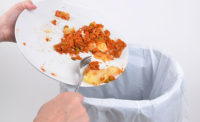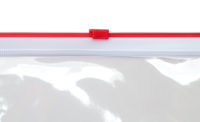For two decades, sustainable packaging has been on a roller coaster ride characterized by some electrifying, albeit brief, highs generally followed by lengthy and sobering lows.
Its practical application never quite lives up to the promise it proclaims. Now, evidently, it is again on the rise but with plenty of momentum to elbow its way into the fray as a legitimate player. Is sustainable packaging ready to go toe to toe with conventional plastics?
“In terms of shelf life and preservation of food, I think we’re there,” one executive says, speaking from a broad industry perspective. “Processors can find a sustainable solution with high barrier, extended shelf life and be a recoverable product. Some claim to match or even exceed shelf life delivered by conventional materials.”
So, we can check the product-performance box, but how does the storyline change when price is blended into the mix? This is usually where the roller coaster nosedives into a deep trough.
“Typically, people are not paying more,” the executive continues. “There are materials that compete comfortably at price parity. I don’t see price being that much of a challenge.”
This being the case, film appears to benefit more because it has become the pre-eminent format in the U.S. with more and more skin packaging applications and flex/flex vacuum packs. “I don’t see thermoformed trays from sustainable film yet in the U.S. for a couple of reasons: One, you don’t get a rolled edge, although the equipment exists to do it, but requires a capital investment; and, two, there are a lot of tray sealers in place for premade trays.”
Granted, sustainable packaging does not suit everything, but its long, drawn-out welcome for a lot of protein applications is puzzling. Perhaps a new day is here. The negative media attention heaped on single-use plastic sparked some large brand owners in that space to drive investment to find solutions. Sustainability may at last have started to be cool and that halo effect bodes well for packaging.
“There are outcries along the supply chain to ‘bring me something.’ The pull is coming from brand owners and retailer mandates for sustainable solutions.”
No one wants to miss the bus that for so long many did not want to ride. There is good reason for this notion. Socially conscious Millennials have a strong commitment to sustainability, according to the article “Gen Green: how Millennials will shape the circular economy” from the November 2018 Environment Journal. Right now they represent the largest demographic in the U.S. work force — one-third. By 2025, that balloons to 75 percent. But, most notably, 75 percent are willing to pay extra for sustainable products. The oldest Millennials will turn 44 years old that year, in the prime of their careers with the commensurate disposable income and the intrinsic social media avenues to trumpet their opinions. Change is here.
Sustainable packaging technology works and the price is right. It is far from perfect and not for every application, but those who have already stepped from the sidelines into the contest and those about to are in for a thrilling ride. NP








Report Abusive Comment